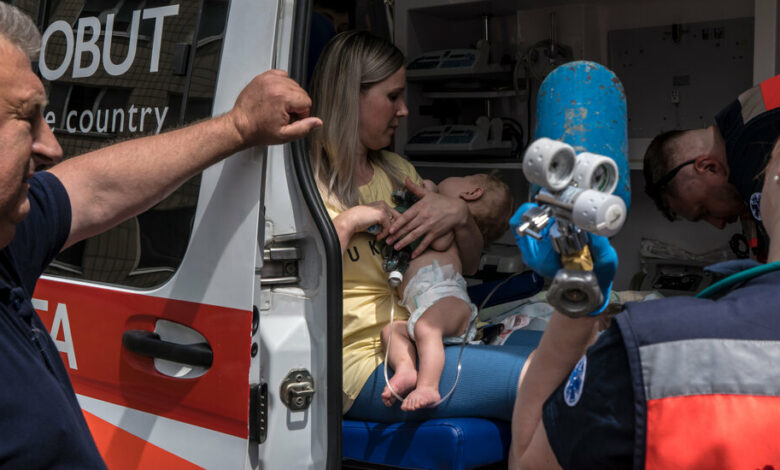More Ukrainians could die in attacks on medical facilities in 2024, WHO data shows

A Russian missile attack on Ukraine’s largest children’s hospital on Monday underscored a growing number of deadly attacks on medical facilities, vehicles and workers in the country this year, adding to data from the World Health Organization suggesting more Ukrainians are on track to be killed in such attacks this year than last year.
Before the attack on the Ohmatdyt Children’s Hospital in Kiev, WHO documented 18 deaths and 81 injuries from more than 175 attacks on health infrastructure in Ukraine in the first half of 2024. The organization also recorded 44 attacks on medical vehicles during that period.
In all of 2023, the organization counted 22 deaths and 117 injuries from 350 such attacks, including 45 specifically on medical vehicles such as ambulances. Other organizations put the death toll even higher.
At least one doctor and another adult were killed in the Monday attack at the hospital, and at least 10 other people, including seven children, were wounded as a Russian barrage swept across the country. In all, at least 38 people were killed in the bombing, including 27 in Kiev, the Ukrainian capital, local officials said.
Attacks on civilian hospitals are prohibited under Article 18 of the Geneva Conventionwhich was ratified by the member states of the United Nations after World War II. And Article 20 of the treaty states that health workers must be protected by all parties to the conflict.
According to experts, Russia has repeatedly attacked the Ukrainian health care system, some of which are considered war crimes.
In a statement on social media on Monday, the Russian Defense Ministry denied intentionally targeting civilian targets in Ukraine. Video of the attack, taken by a Kiev resident and verified by The New York Times, showed a missile flying down at high speed before hitting the hospital.
According to Christian De Vos, attorney and director of research and investigations at Physicians for Human Rights in New York, there has yet to be a prosecution in an international court where an attack on health care infrastructure was the main subject of the case.
Experts say the Russian attack targeted the most vulnerable people and put pressure on Ukraine’s already overburdened health system.
“Under international humanitarian law, hospitals and healthcare facilities are protected precisely because civilians seek care,” De Vos said. “These are locations that are meant to ensure the protection of the civilian population and protect them from the horrors of war.”
The WHO defines a attack on health care infrastructure as any act or threat of violence that disrupts the availability, access or delivery of health services. The data includes both confirmed attacks and probable attacks, which the organization defines as attacks with a single witness statement or two secondary reports confirmed to a WHO partner.
Attacks on hospitals and health workers during conflicts around the world are increasing, experts say. In Ukraine, the increase comes as no surprise to some aid workers.
“We have to constantly review where we work and withdraw from areas that are becoming impossible,” said Christopher Stokes, MSF’s emergency coordinator in Ukraine, where the war has been going on for more than two years.
Earlier this year, the organization tried to set up an emergency room in the Kherson region, but the hospital continued to be bombed, Mr. Stokes said. By the sixth attack, he said, it was decided to abandon the attempt.
Some hospitals are trying to take precautions, experts said, by covering windows with sandbags and moving patients and operating rooms to lower floors. Higher floors are considered too risky because of strikes.
“These hospitals are not places of refuge where you can feel safe, especially as a patient,” Mr Stokes said.
Uliana Poltavets, the emergency coordinator for Physicians for Human Rights, who has documented attacks on health care infrastructure, said she heard the explosion from the strike early Monday morning in Kiev. She said it was part of “a pattern of violence” that has been repeated in Ukraine since February 2022, when the war began.
“The large-scale invasion began with an attack on a maternity hospital in Mariupol,” she said. “After three years of war, children seem to be the target.”




